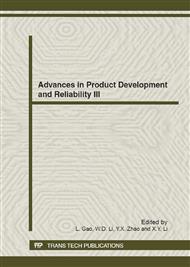p.235
p.240
p.245
p.251
p.256
p.262
p.268
p.274
p.280
Research of High Speed Train Carbody Structure Vibration Behaviors and Structure Fatigue Strength Characteristic Technology
Abstract:
The hybrid simulation method based on Multibody Simulation (MBS) and finite element method (FEM) were proposed here and applied to study the relation between carbody structure vibration behaviors and structure fatigue strength characteristic. The detailed steps include: Firstly, rigid-flexible couple vehicle multibody system dynamic model was created and performed to obtain the load time histories corresponded to the typical load cases. Secondly, the carbody structure stresses was calculated through Finite Element (FE) quasi-static stress method. Finally, with the material fatigue property and some uncertainty factors, carbody fatigue damage distribution and life was calculated and evaluated. And the conclusions can be understood that the mechanism between the full vehicle dynamic property and structure damage distribution. The results are also shown that the hybrid simulation technology could be applied into the carbody structure fatigue design.
Info:
Periodical:
Pages:
256-261
Citation:
Online since:
June 2012
Authors:
Price:
Сopyright:
© 2012 Trans Tech Publications Ltd. All Rights Reserved
Share:
Citation:


